AudioThing
Showing 1–20 of 30 results
Showing 1 - 20 out of 20
Page 0 out of 0
| Rating | Image | Product | Price |
|---|---|---|---|
|
4.9 SOUND QUALITY FEATURES VALUE FOR MONEY EASE OF USE |
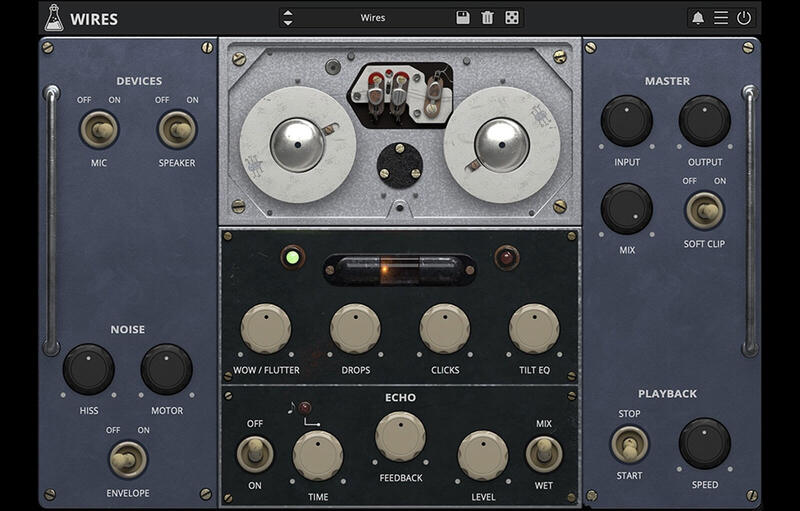 |
WiresTurn the echoes of the past into the music of now with Wires. German composer and YouTuber Hainbach opened his treasure chest for us: we are happy to present to you Wires, an accurately modeled and enhanced 1970s Soviet wire recorder. Made originally for military and secret service use across the Iron Curtain, in the hands of a few avant garde musicians it became a magical lofi-tool and ghostly echo machine. Now this rare and rather finicky to operate piece of hardware is available for the first time as a faithful yet modern plugin. MAIN FEATURES
Transform your audio to the world of numbers stations and secret operations, dub out to very unusual echoes or make the most lofi beats to study too. We took great care to get all the idiosyncratic behavior exactly right – it reacts dynamically to the input and does stuff to audio that is a completely different texture to magnetic tape. There is a special tone to the hair-thin wire and the vacuum tube output stage of this machine, unheard of anywhere else. The standard way to make a unit such as this music is to put it on an aux channel of a mixer, to turn it into a fixed tempo echo. We offer all the variable time features you want, as well as the option to switch off the rather high noise floor of this machine without sacrificing the rather alive sound. WIRE RECORDERS LO-FI There is a special tone to the hair-thin wire and the vacuum tube output stage of this wire recorder, unheard of anywhere else. Wires turns the most boring signals into sepia coloured magic. Windows 7 – 11
OS X 10.9 – macOS 13
Ubuntu 20.04 LTS
|
Price History: Wires 38.35 $ |
|
4.88 SOUND QUALITY FEATURES VALUE FOR MONEY EASE OF USE |
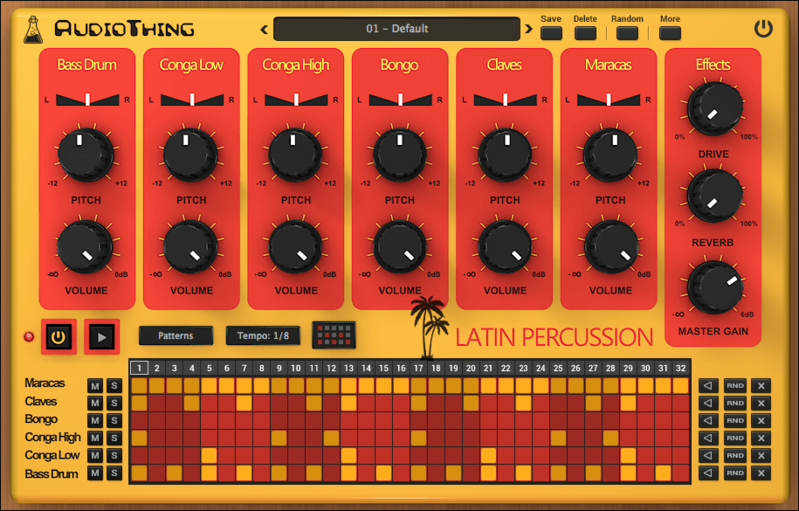 |
Latin PercussionLatin Percussion is a sample-based plugin emulation of the Sound Master Latin Percussion, a rare analog drum machine from the 80s. The instrument features 6 classic latin sounds: Bass, Low Conga, High Conga, Bongo, Claves, and Maracas, which can be pitched, panned or mixed independently. You can additionally shape the sound with the Overdrive and Reverb. The sequencer lets you easily build patterns that can be dragged and dropped to your DAW/host. Specifications
Windows 7, 8, 10 (64 bit)
OS X 10.9 – macOS 12
|
Price History: Latin Percussion 25.35 $ |
|
4.88 SOUND QUALITY FEATURES VALUE FOR MONEY EASE OF USE |
 |
miniBitminiBit is a 8-bit/chiptune style synthesizer that emulates the sound of 80s game consoles and retrocomputers. It features a main oscillator with 15 waveforms paired with a sub oscillator (a square wave pitched one octave below). The waveforms are not bandlimited and will produce aliasing. Furthermore, using the built-in bitcrusher, you can create even more noisy and retro sounds. The new version also features a synced 8 Steps Stepper/Sequencer with multiple destinations. From noisy, snare-like steps to ambient subs, miniBit has many uses beyond what one expects from a chip tune synth. Specifications
CLASSIC CONSOLES miniBit was inspired by the sound of classic game consoles and retro computers of the 80s and 90s. Some of the waveforms were carefully created and edited with an Amiga 1200, while others were meticulously recreated from the sounds of the best classic games that we have collected over the years. STEP SEQUENCER miniBit features an 8 steps sequencer that can be used to automate several parameters: pitch, volume, cutoff, resonance, waveform, and downsampling. Sequencing the waveforms will generate sounds reminiscent of early trackers and wavetable synthesizers. Each track can also be randomized using the dice buttons on the right. CUSTOM WAVEFORMS The Custom Waveform Editor features 32 steps and 8 waveform slots per preset. You can draw your waveforms by clicking and dragging on the editor. You can also use the built-in examples as a starting point. Each preset has its own set of custom waveforms, if you want to use a custom wave with another preset you can use the Copy/Paste buttons, or you can disable the Update Custom Waves in the global settings. To open the Custom Waveform Editor select one of the Custom Waveforms from the Waveform monitor and click on the Editor button. Minimal Requirements PC Requirements:
Mac Requirements:
Note: This plugin is 64bit ONLY! |
Price History: miniBit 13.00 $ |
|
4.82 SOUND QUALITY FEATURES VALUE FOR MONEY EASE OF USE |
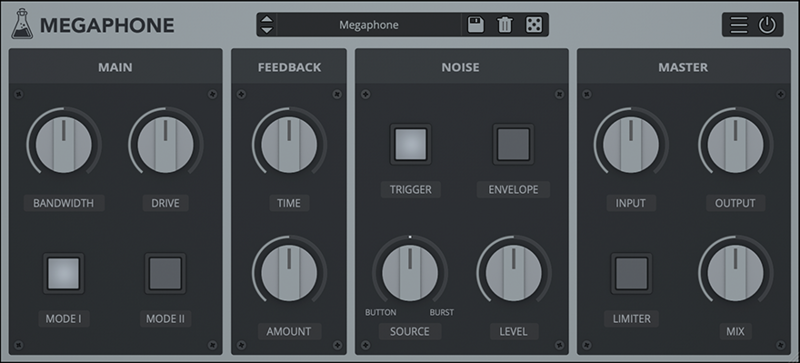 |
MegaphoneBullhorn / Loudspeaker Emulation Megaphone is a plug-in that emulates a bullhorn/loudspeaker effect, which features two loudspeaker emulations, feedback (slapback) control and a noise section. Megaphone can be used to make any audio source sound as if it’s being played by a bullhorn. Feedback The feedback section is essentially a slapback effect. When using megaphones, the output of the loudspeaker can be captured again by the input microphone, introducing a delay/reflection and the usual feedback tones (those can be triggered with high gain sources and feedback amount higher than 50%). Noise:
Features
Windows XP SP2 or later / OSX 10.6.8 or later Intel Core 2 Duo 2GHz or equivalent 2 GB RAM / 500 MB HD Screen resolution: 1024×768 VST2, AU, or AAX 64-Bit ONLY MAC SPECS:
|
Price History: Megaphone 12.35 $ |
|
4.82 SOUND QUALITY FEATURES VALUE FOR MONEY EASE OF USE |
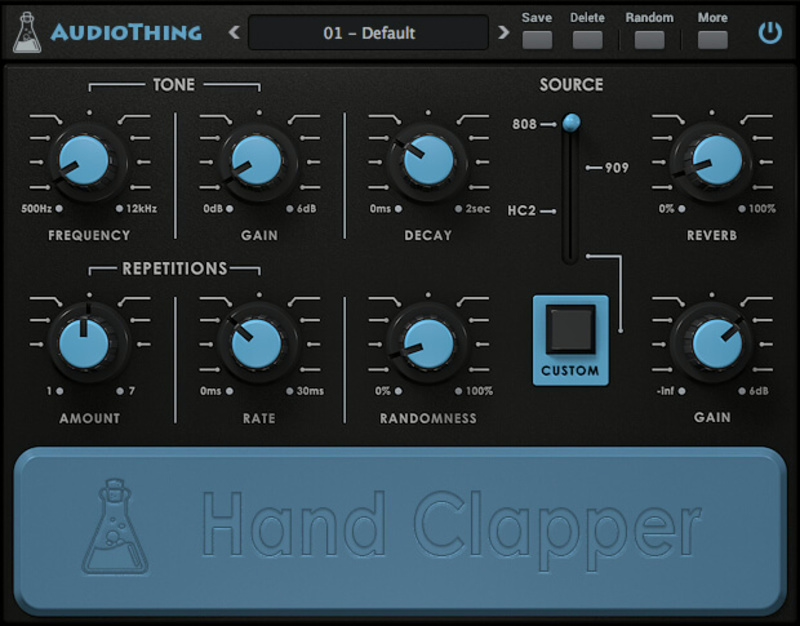 |
Hand ClapperHand Clapper is a drum synthesizer dedicated to claps sounds. The internal design is inspired by a famous Japanese percussion synthesiser from the ’80. There are three internal noise sources that are used to recreate the classic sound of vintage analog drum machines (such as 808, 909, HC2, and more). You are not limited to just the on-board sounds though, you can also load in any sample you want. Specifications Windows 7, 8, 10 (64 bit)
MAC Requirements:
|
Price History: Hand Clapper 16.25 $ |
|
4.8 SOUND QUALITY FEATURES VALUE FOR MONEY EASE OF USE |
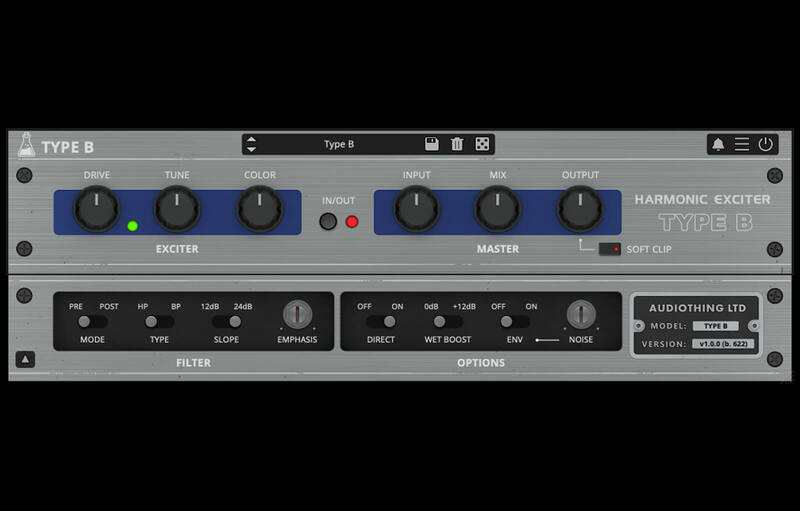 |
Type BVINTAGE EXCITER Type B is a plugin inspired by a famous vintage exciter effect. The original unit was designed to add presence and brightness to vocal or instrument tracks. It was often used to enhance dull recordings where the high frequency content was missing due to tape overdubs. Type B lets you control more aspects of the exciter circuit emulation, giving you access to the internal filter, the harmonic generator and more. MAIN FEATURES:
ADDITIONAL FEATURES You can show/hide the drop-down panel by clicking on the arrow icon in the bottom left corner of the interface. You’ll get access to:
HOW DOES IT WORK? Exciters generate high-frequency content that is not part of the original signal using a combination of filtering and distortion (harmonic generator). The input signal goes into a filter (usually highpass, but you can also choose bandpass with Type B) before feeding it into the harmonic generator. You have controls over the generated harmonics using the Color parameter. The signal is then mixed back with the dry signal. Windows XP SP2 or later / OSX 10.6.8 or later Intel Core 2 Duo 2GHz or equivalent 2 GB RAM / 500 MB HD Screen resolution: 1024×768 VST2, AU, or AAX 64-Bit ONLY |
Price History: Type B 38.35 $ |
|
4.78 SOUND QUALITY FEATURES VALUE FOR MONEY EASE OF USE |
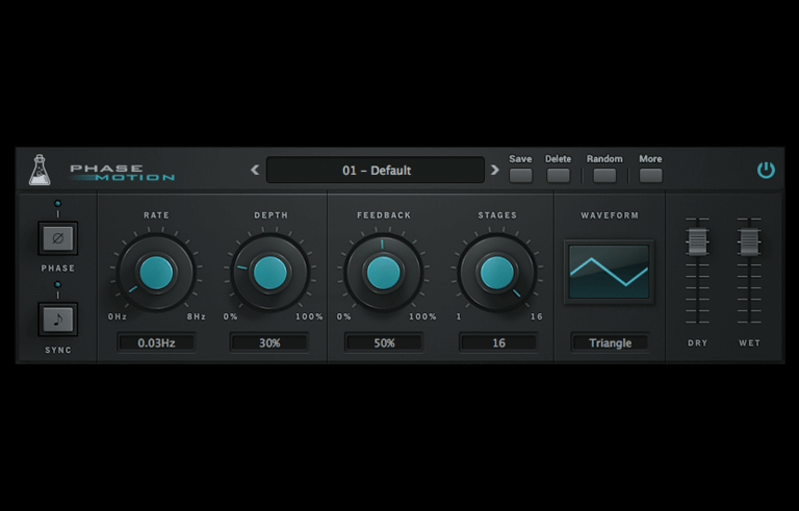 |
Phase MotionPhase Motion is a Phaser plugin featuring up to 16 phasing stages. It is possible to choose from 7 waveforms (sine, triangle, saw, square, smooth saw, smooth square, random s&h) to modulate the phase, and you can tweak Depth and Feedback to range from classic vintage phaser sounds to extreme digital modulations. The Rate can be adjusted in Hertz or it can be synced to the host/DAW tempo. For even more phase modulation effects it is also possible to invert the modulation phase for one channel of a stereo signal. Specifications
Windows 7, 8, 10 (64 bit)
OS X 10.7 – macOS 10.14
|
Price History: Phase Motion 18.85 $ |
|
4.78 SOUND QUALITY FEATURES VALUE FOR MONEY EASE OF USE |
 |
Things – BubblesSparkling Filterbank Delay Things – Bubbles is an unusual filter bank effect plugin aimed at experimental sound design. You can use up to 10 band pass filters, represented by bubbles in the UI, with controllable resonance. Each band can have a dedicated delay with feedback. You can spread the cutoff, resonance, delay time, and delay feedback across each band to get very creative effects, from odd sounding echoes/reverbs to impossible sequences. Specifications
MAC
WIN
Linux
|
Price History: Things – Bubbles 12.35 $ |
|
4.76 SOUND QUALITY FEATURES VALUE FOR MONEY EASE OF USE |
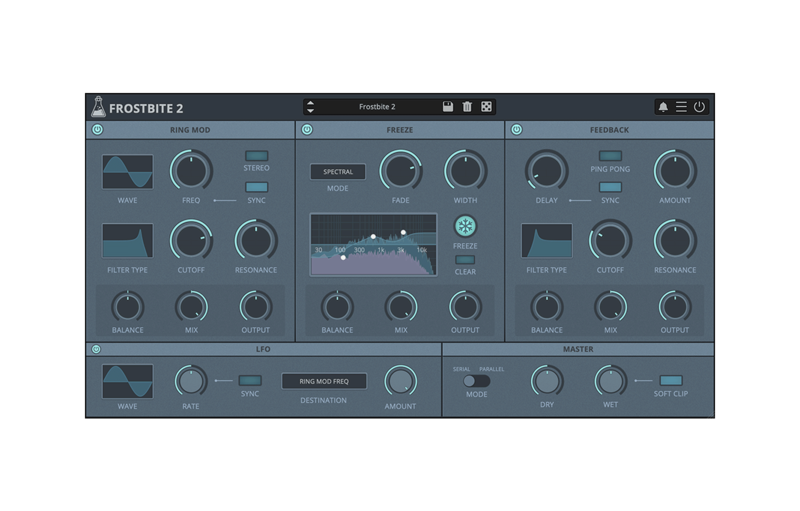 |
Frostbite 2SPECTRAL FREEZE, RING MOD, FEEDBACK Frostbite is a spectral freezing plugin combined with a Ring Modulator and a Feedback module. With the three freezing modes (spectral, reverb, convolution), you can transform any sound into ambient textures, soundscapes, or just frozen reverbs. Frostbite can also be used for extreme sonic experiments by entirely mangling any source with extreme modulations. The Signal Flow is flexible, you can rearrange the modules with a simple drag-and-drop, and selects between the two modes: serial and parallel. With the internal LFO you can modulate most of the parameters on each module, creating evolving eerie soundscapes. THREE FREEZE MODES The Freeze module has three freeze modes that you can choose:
DRAG AND DROP Frostbite 2 can be used in serial or parallel mode. When used in serial mode, you can rearrange the modules with a simple drag-and-drop to change the signal flow. SPECIFICATIONS
Windows 7, 8, 10 (64 bit)
OS X 10.9 – macOS 11
|
Price History: Frostbite 2 38.35 $ |
|
4.74 SOUND QUALITY FEATURES VALUE FOR MONEY EASE OF USE |
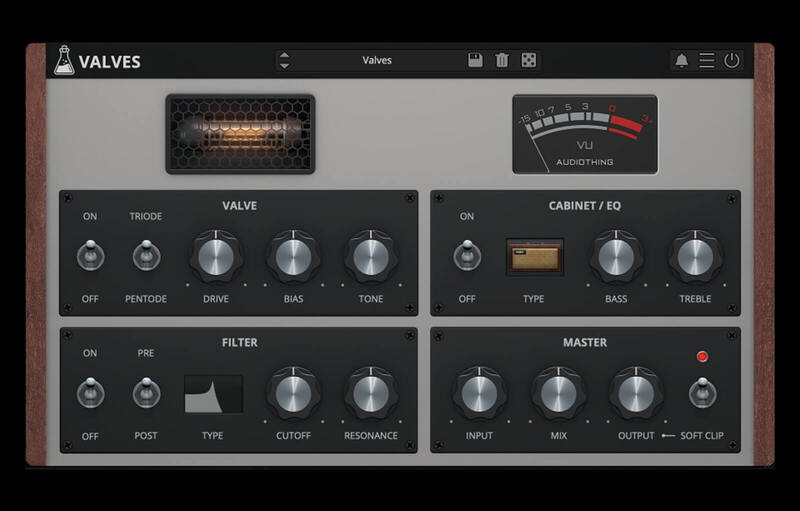 |
ValvesValves is a vintage valve emulation plugin with multi-mode resonant filter and cabinet/EQ section The valve section is modeled after classic vintage tubes, with added grit and custom gain control. The filter section is modeled after a classic ladder filter (2-pole or 4-pole) with low pass, high pass, bandpass and notch modes. The cabinet/EQ section features a selection of modeled cabinets with classic bass and treble EQ controls. SPECIFICATIONS:
WARM UP With up to 16x oversampling, Valves can be used to add that authentic tube character to your tracks. Using the built-in Cabinet/EQ section you can emulate several types of guitar amplifiers and further shape the overdrive sound. The state variable filter features LowPass, HighPass, BandPass, and Notch modes. It can be used pre or post valve. PC:
MAC:
|
Price History: Valves 38.35 $ |
|
4.72 SOUND QUALITY FEATURES VALUE FOR MONEY EASE OF USE |
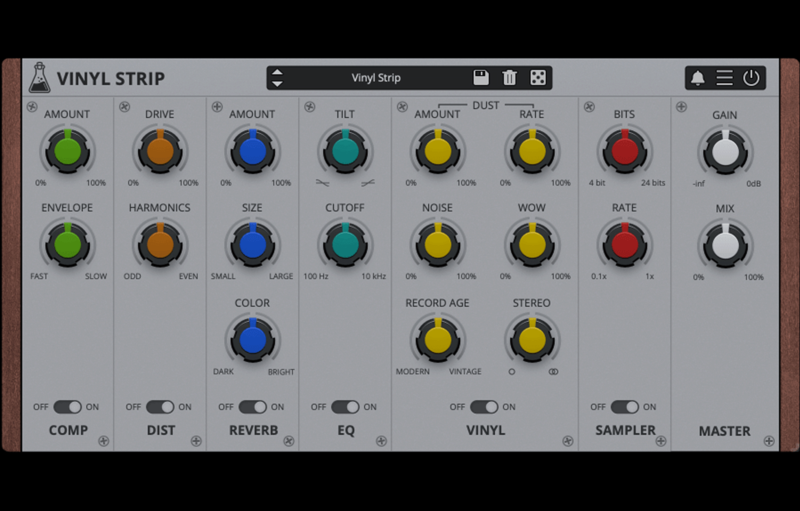 |
Vinyl StripMODULAR CHANNEL STRIP Vinyl Strip is a multi-effect plugin featuring 6 modules: Distortion, Compressor, Bit Crusher, Tilt EQ, Vintage Reverb, and Vinylizer. The modules can be arranged in any combination by simple drag-n-drop. Vinyl Strip will add life and an old school touch to your samples and tracks, and achieve that classic vinyl record sound in your digital environment. The plugin is optimized to be lightweight on the CPU. 6 MODULES Much more than just a vinyl emulator, Vinyl Strip features 6 modules dedicated to recreating that classic vintage/old school sound of vinyl recording and sampling.
DRAG AND DROP You can customize your channel strip with a simple drag-and-drop. By default, all modules (except the Master module) can be moved and re-arranged to create different signal flows. For example, you can decide to add the compressor module after the Vinyl emulation, or vice versa. “An approachable but powerful way to add all kinds of vinyl, ageing and retro effects to your tracks with a minimum of fuss – 9/10” Music Tech. The world’s best magazine & website for producers, engineers and recording musicians Windows 7, 8, 10
OS X 10.9 – macOS 12
|
Price History: Vinyl Strip 38.35 $ |
|
4.72 SOUND QUALITY FEATURES VALUE FOR MONEY EASE OF USE |
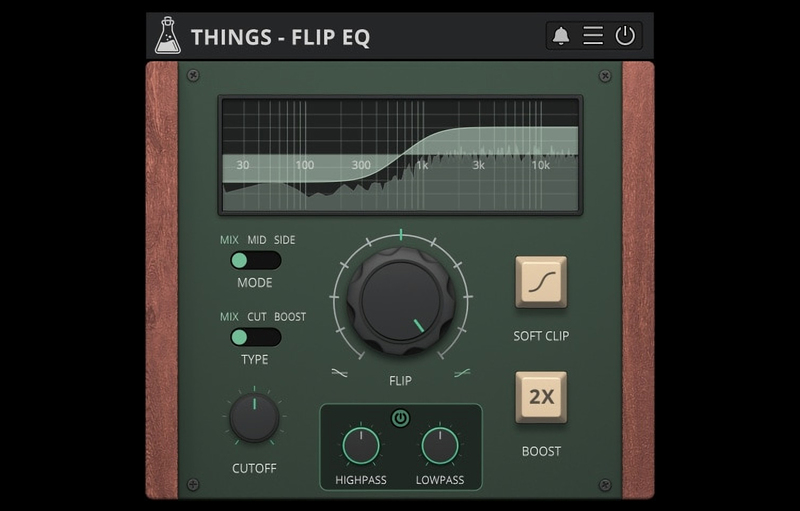 |
Things – Flip EQTilting EQ with Mid/Side Things Flip EQ is an easy-to-use tilting EQ plugin with mid/side mode. Turn the main knob to the right, and you get more highs and less lows; turn it to the left, and lows are boosted while highs are attenuated. You can choose the cutoff frequency of the EQ with the Cutoff control, or increase the gain of the EQ with the Boost button. Things Flip EQ can also be applied to either the mid or side of a stereo signal to further enhance the stereo depth. MAIN FEATURES
MID / SIDE – What is Mid / Side? The Side channel instead contains the difference between the Left and Right channels. Boosting the Side channel results in a more spacious or wider sound. Mid / Side Mode Windows
Mac
|
Price History: Things – Flip EQ 12.35 $ |
|
4.72 SOUND QUALITY FEATURES VALUE FOR MONEY EASE OF USE |
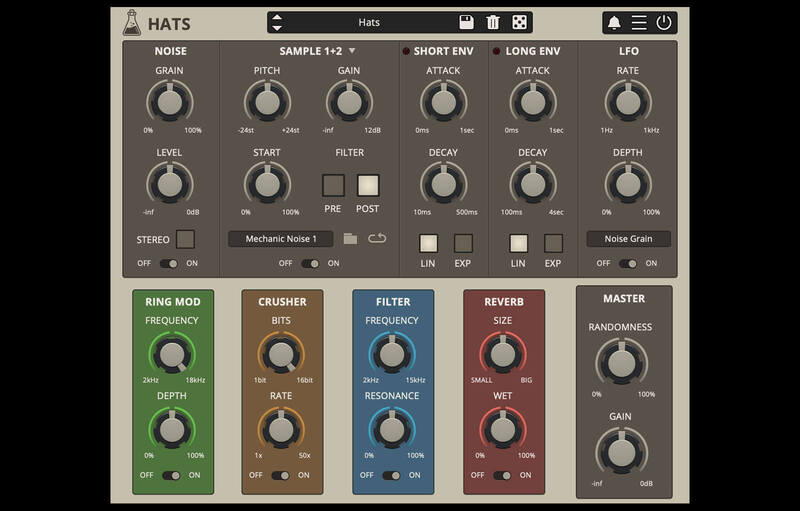 |
HatsHats is a drum synthesizer plugin dedicated to hi hats and cymbals sounds. It features two independent sources: synthesized noise and sample section. Instead of generic white or pink noise, the noise section features 6 square wave oscillators with different pitches and phases, like the famous TR808. The result is a noise sound with a controllable metallic character. The factory bank comes with more than 50 samples, ranging from rare analog drum machines to real acoustic hi hats and cymbals. Some of the samples were also processed with a classic Aphex Aural Exciter and recorded to tape with a vintage Revox B77 MkII. Both sources can then be processed with 4 effects: Ring Modulator, Bit Crusher, Filter, and Reverb. The effects can also be arranged in any order with a simple drag and drop. The filter section features an HighPass and BandPass in series; both filters are 12dB/oct state variable filters with zero delay feedback. Specifications
Windows 7, 8, 10
OS X 10.7 – macOS 10.15
|
Price History: Hats 31.85 $ |
|
4.7 SOUND QUALITY FEATURES VALUE FOR MONEY EASE OF USE |
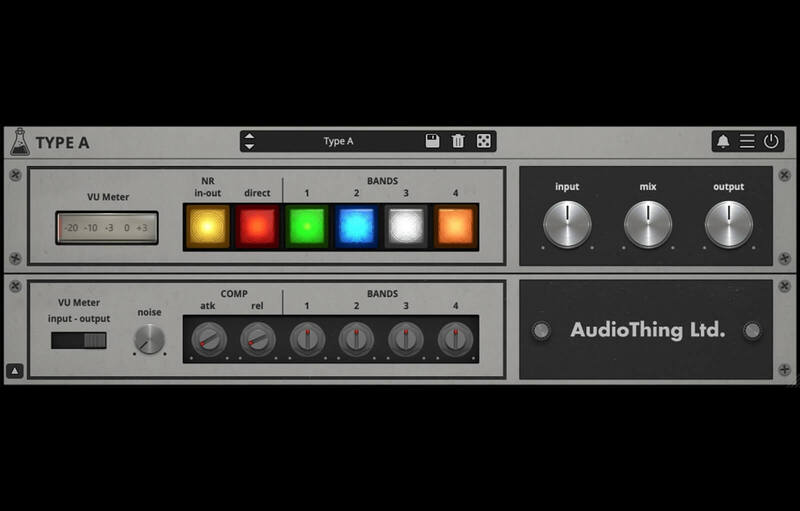 |
Type AType A is a plugin inspired by a famous vintage tape encoder. The original unit was designed to be a noise reduction system for tape recording (encode stage) and playback (decode stage). Type A emulates the encode stage, which was often misused as an enhancer, dynamically increasing the top end of a signal without introducing artefacts or altering the harmonic content. The results are similar to a dynamic EQ which adds presence and air to any track in a natural way. FEATURES:
ADDITIONAL FEATURES You can show/hide the drop-down panel by clicking on the arrow icon in the bottom left corner of the interface. You’ll get access to:
HOW DOES IT WORK? To limit the amount of noise generated by tape recording, early noise reduction systems used what’s called a multi-band compander (compressor/expander). The unit dynamically emphasizes the high frequencies during the encoding stage (recording to tape), so that during the decoding stage (playback from tape) the signal is attenuated, along with the typical tape noise. Type A emulates the encoding stage only. The input signal is split into 4 bands (with the highest bands overlapping), dynamically compressed and then summed back with the dry signal. The amount of compression on each band is inversely proportional to the volume of the band. Quieter sounds get brighter while louder sounds remain almost unchanged. This adds brightness and air without generating any new harmonic content or distortion, resulting in a more pleasant and natural enhancer compared to a typical exciter. NOISE REDUCTION OR ENHANCER? Introduced in 1966 with the Dolby A301 first, and then in 1970 with the Dolby 361 (with the CAT 22 card, in photos), the A-Type noise reduction was quickly misused and modded by engineers to enhance their recordings by using the encoding stage only. The most common mod consists in disabling the two lower bands so that only the high-frequency portion of the signal is compressed, giving even more air to vocals. This technique was labeled with many names like the Vocal Trick, Stretch Mod, Vocal Stressor, and even the “John Lennon mod”. PC:
MAC:
 |
Price History: Type A 38.35 $ |
|
4.7 SOUND QUALITY FEATURES VALUE FOR MONEY EASE OF USE |
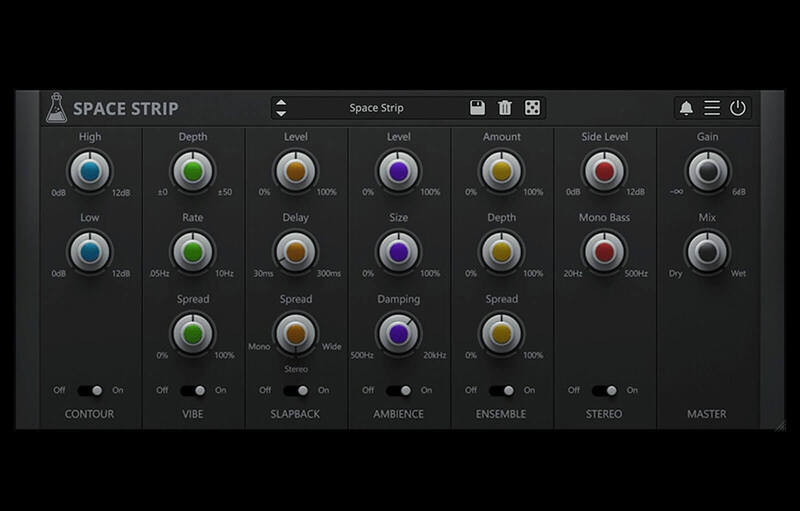 |
Space StripMODULAR CHANNEL STRIP Space Strip is a multi-effect plugin featuring 6 modules: Contour, Vibe, Slapback, Ambience, Ensemble, and Stereo. The modules can be arranged in any combination by simple drag-n-drop. Space Strip will add depth and space to your sounds, especially synth and keyboards. The plugin is optimized to be lightweight on the CPU. 6 MODULES
DRAG AND DROP You can customize your channel strip with a simple drag-and-drop. By default, all modules (except the Master module) can be moved and re-arranged to create different signal flows. SYSTEM REQUIREMENTS PC
MAC
|
Price History: Space Strip 38.35 $ |
|
4.7 SOUND QUALITY FEATURES VALUE FOR MONEY EASE OF USE |
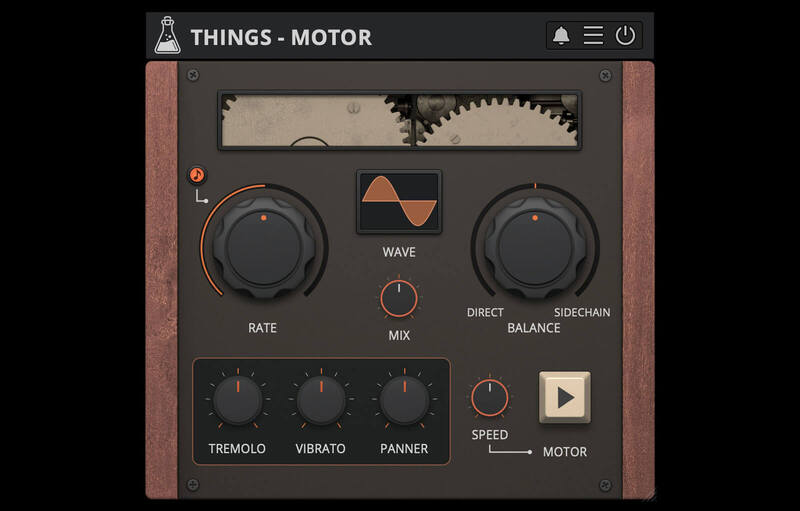 |
Things – MotorMORPHING ROTOR EFFECT Motor is a plugin effect that uses side-chaining to combine signals in new and interesting ways: put in any two signals and they will dance around each other like courting birds drunk on fermented cherries. Use it to gentle morph between sounds or rhythmically cut them up, affecting both volume and spatial position. Add life to the plainest signals with vibrato, or destroy them in interesting ways with extreme modulation speeds. MAIN FEATURES
Where does it come from? Like our previous collaboration with Hainbach (the Soviet spy recorder turned echo, Wires), Motors takes cues from history: “The Crystal Palace” built by Dave Young for the BBC Radiophonic workshop. This one-of-a-kind tool allowed speed-dependent switching of up to sixteen audio channels. It did so in an almost steampunk fashion, by employing a big capacitor rotating on a Motor. The effects it created reached from sublime to almost granular, a major achievement at the time. You can hear it on the soundtrack to the Doctor Who episode “The Krotons” by Brian Hodgson and Delia Derbyshire. What is new? Things Motor focuses and expands on this peculiar tool by allowing the combination of two signals via sidechain, which makes it work easily across platforms. Switching is controlled via a variable waveshape LFO instead of the fixed physical waveform of the original. This allows for smooth morphing or aggressively chopped sounds, and worlds in between. You can even use it for audio rate modulation of signals, which results in ring-modulation-like artifacts. To make it a truly versatile tool, we added a vibrato and a panner synced to the “motor” LFO, as well as some of our classic analog-like sound shaping. Together with the variable time on the motor start/stop this becomes the sound morphing rotary effect you never know you needed – until you hear it. Crystal Palace BBC Photo by Ray White The past melts into the present While the original Crystal Palace might not be heard in public again, with Things Motor you get a modern take on a classic tool. Bringing avant-garde techniques of the past to a modern audience is one of Hainbach’s main interests on his channel, and we are happy to have partnered up with him on this. But it does not end here: if you are interested in a real-live recreation of this, watch Look Mum No Computers video, who started building his take on it in tandem with us. Windows
Mac
|
Price History: Things - Motor 12.35 $ |
|
4.7 SOUND QUALITY FEATURES VALUE FOR MONEY EASE OF USE |
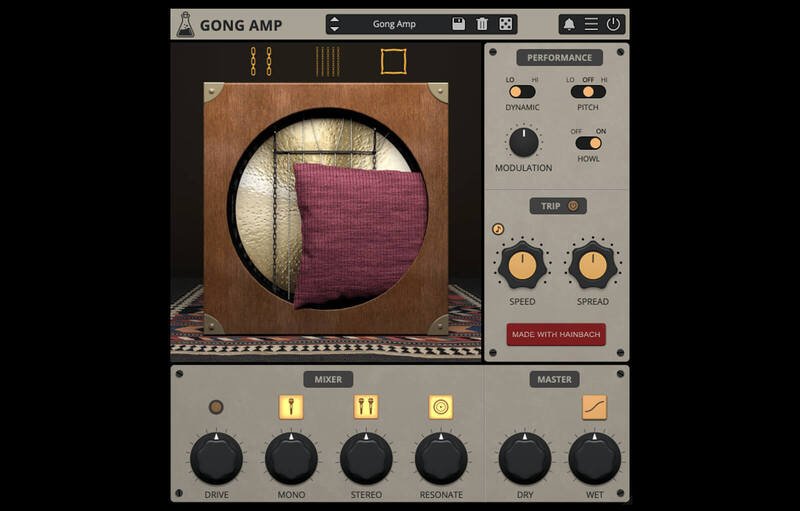 |
Gong AmpGong Amp takes an exciting experimental amplifier from the beginnings of electronic music to the plugin world of today. In 1932, Maurice Martenot was looking for a way to make his groundbreaking proto-synthesizer “Ondes” audible beyond what could be archived with the horns and loudspeakers of the time. He developed a set of “diffuseurs”, of which the “Métallique” was one. Instead of a paper cone or horn, Martenot put a gong behind the amplifier circuitry. This seemingly simple idea resulted in resonances and brilliant overtones that excite audiences to this day. In 2011, the French company Eowave took inspiration from Martenot’s invention and made their own version, the Resonator Metallik. When we heard what our friend, Berlin composer Hainbach, did with this rare and discontinued amplifier, we knew this sound needed to be available to more than a select few. So we made Gong Amp, our third collaboration with Hainbach since Motors and Wires. Using a complex mixture of convolution processing, physical modeling, and feedback systems, we created an instrument that is true to the responsiveness of the original and even transcends it in terms of sound design possibilities. The Metallik Resonator Eowave built their fantastic version of Martenot’s invention from 2011 to 2018 on demand in small numbers. Much treasured by collectors, Hainbach got the last one made especially for him from the last parts in the shop at Eowave. You can choose from three recording positions: mono mic, stereo mics, and a unique “resonator” effect Hainbach designed. Try mono for a “documentary” perspective, stereo for beautiful ribbon mic width, and hear reverb feeding into reverb in “resonator” mode. Try upping the input overdrive for added overtones, and use the soft clip for output distortions. Applications Taking a page from the experimental percussionists’ handbook, you can add thick and thin chains to the Gong. The sympathetic rattling creates effects that range from a soft shimmer to clangorous noise. The strength of the Métallique, its long ring, is also its weakness when playing fast: everything turns to mush. So we added a pillow that dampens the sound and makes Gong Amp “arpeggio-approved”. Performance Adjust the sound of Gong Amp to your playing style. Choose from two different gain settings on the gong with “Dynamic”. Add modulations for a slightly more psychedelic sound. Modulation adds liveliness as well as subtle stereo width as if the gong was swaying. It runs both pre-Gong and post-Gong, so leave this at low setting for purity and turn it up to tune in. Turn on “howl” to hear Gong Amp struggle beautifully when overloaded. Experiment with extreme pitch manipulations for cinematic effects. Trip Mode With Trip Mode, you can add automated crossfading between the three signal positions of mono, stereo and resonate. Use spread to adjust the rhythmic shift. From gentle drifts that last minutes to fast rotary effects, this is a sound designer’s dream. macOS
Windows
|
Price History: Gong Amp 38.35 $ |
|
4.7 SOUND QUALITY FEATURES VALUE FOR MONEY EASE OF USE |
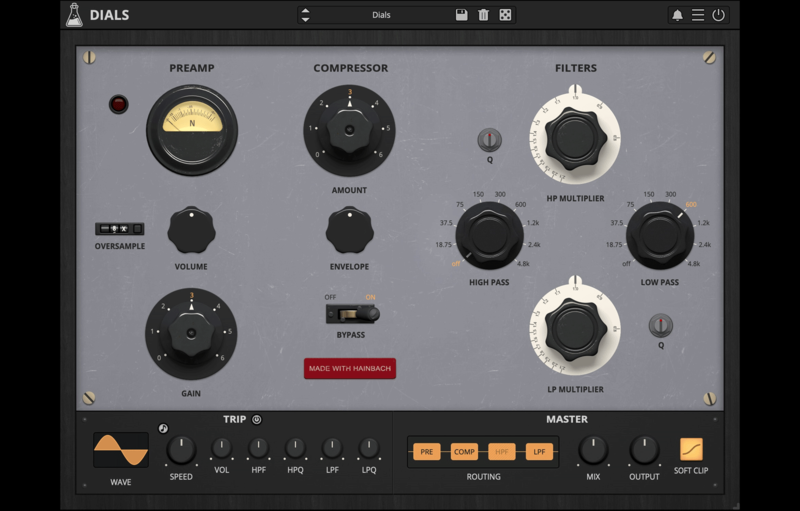 |
DialsThe treasured sound of 1950s electronics re-created Dials is a detailed digital translation of a unique combination of 1950s electronic music hardware from composer and YouTuber Hainbach’s studio. It is made with the rich sound and experimental spirit of early electronic music studios in mind. The basis of Dials is a re-purposed German vacuum tube radio broadcast device paired with a heavy-duty American bandpass filter. They form a channel strip like no other. The scientific and radio background of the equipment provides a tone that sets it apart, whether you are processing vocals, drums, or any other instrument. Due to the built-in compressor, it is perfectly suited to lend your voice-over the “larger than life” feeling of great recordings of the past or make your drums sound like they could get past the door at Berghain. Speaking of which: if you are feeling adventurous, feed it impulses and hear it roar like Stockhausen at a Gabber party. While its roots are in the past, this is a truly modern device with an unparalleled sound. It can be used to sweeten your music or to experiment – it can even become an instrument in your hands. Specifications
Windows 7, 8, 10
OS X 10.9 – macOS 12
|
Price History: Dials 51.35 $ |
|
4.68 SOUND QUALITY FEATURES VALUE FOR MONEY EASE OF USE |
 |
Fog Convolver 2Fog Convolver 2 is a true stereo convolution reverb/processor plugin. This new version has been rewritten and redesigned from scratch, and now features modulation, effects, an impulse response generator, and a lot of improvements. You can now load 2 separate impulse responses (or one true stereo/quad channel impulse response) and have separate or linked controls for both. There are 5 different routing modes to arrange the impulses: single, serial, parallel, parallel mix, and true stereo. Each impulse can have: 2 LFOs, with 10 waveforms and 18 destinations, one dedicated multi-mode filter (with pre, IR, or post modes), and a 5-band graphic EQ. Fog Convolver features 8 factory banks with more than 660 impulse responses made from spaces, analog and digital equipment, organic sources, and more. Windows 7, 8, 10
OS X 10.9 – macOS 12
|
Price History: Fog Convolver 2 44.85 $ |
|
4.66 SOUND QUALITY FEATURES VALUE FOR MONEY EASE OF USE |
 |
The OrbThe Orb is a formant filter plugin which simulates the characteristics of the human voice. Featuring a set of three band pass filters, The Orb can transform any sound into a vowel-like formant-filtered sound. With the three LFOs you can modulate the Vowel, the Emphasis/Resonance of the formants, and the Drift, which can shift up or down the frequencies of each formant. You can also create your own set of vowels by changing name and frequency for each vowel/formant. Specifications
Windows 7, 8, 10 (64 bit)
OS X 10.9 – macOS 11
|
Price History: The Orb 31.85 $ |
Looking for unique and inspiring sound tools? AudioThing has got you covered! With their innovative plugins and sample libraries, AudioThing offers a wide range of creative tools that will spark your imagination. From vintage emulations to experimental effects, their products are designed to add character and depth to your music. With a focus on quality and attention to detail, AudioThing is trusted by musicians and sound designers worldwide. Don’t miss out on this opportunity to enhance your sonic palette. Buy AudioThing at the best price on Soundsmag today and unleash your creativity!




